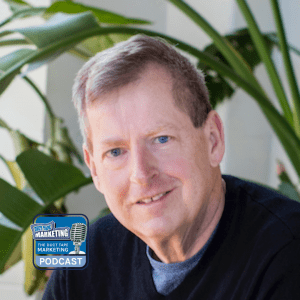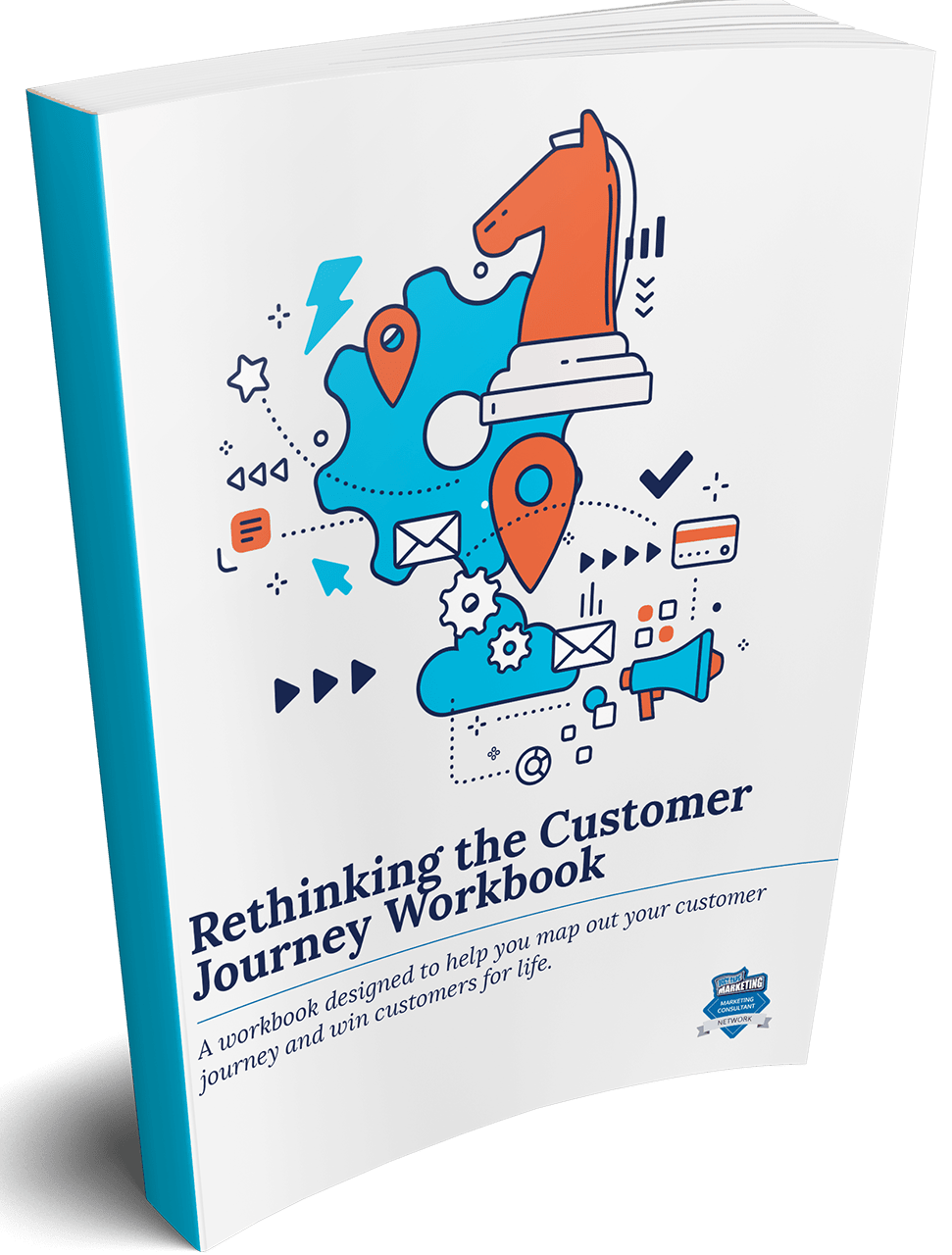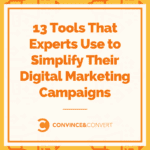10 Key Areas That May Be Holding Your Business Back
10 Key Areas That May Be Holding Your Business Back written by John Jantsch read more at Duct Tape Marketing
Marketing Podcast with John Jantsch
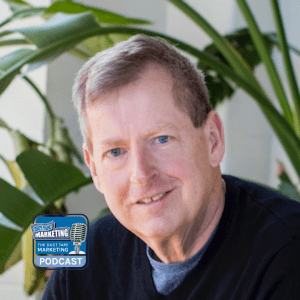 In this episode of the Duct Tape Marketing Podcast, I’m doing a solo show. I’m going to break down the 10 key areas that may be holding your business back.
In this episode of the Duct Tape Marketing Podcast, I’m doing a solo show. I’m going to break down the 10 key areas that may be holding your business back.
![]()
![]()
Key Takeaway:
If you’re a long-time listener, you know that my point of view is strategy before tactics. In this episode, we’re going to focus on the 10 key areas that may be holding your business back. These aren’t just 10 tactics — we’re going to dive into on these key areas and how you can use them as pillars to help you build a systematic approach to marketing and growing your business.
Topics I cover:
- [2:44] Number one — narrow the focus to an ideal client
- [4:43] Number two — develop a core message that allows you to communicate and promise to solve the greatest problem that your ideal client customer is experiencing today
- [6:55] Number three — build a total online presence that meets people where they are and that helps build trust and demonstrates your expertise
- [8:56] Number four — building a steady flow of incoming leads
- [10:34] Number five — how to convert leads into customers
- [12:12] Number six — how to use content as the voice of strategy along the customer journey
- [13:53] Number seven — retaining customers is how you build momentum
- [15:23] Number eight — generating referrals and building strategic partner relationships is essential
- [16:25] Number nine — using metrics to understand what works and what doesn’t – if you don’t have a plan to measure, you’ll be guessing
- [18:02] Number ten — you have to have a marketing plan you are working from
Take The Marketing Assessment:
- Marketingassessment.co
Like this show? Click on over and give us a review on iTunes, please!
John Jantsch (00:00): This episode of the duct tape marketing podcast is brought to you by business made simple hosted by Donald Miller and brought to you by the HubSpot podcast network business made simple, takes the mystery out of growing your business. A long time, listeners will know that Donald Miller’s been on this show at least a couple times. There’s a recent episode. I wanna point out how to make money with your current products, man, such an important lesson about leveraging what you’ve already done to get more from it. Listen to business made simple wherever you get your podcasts.
John Jantsch (00:45): Hello and welcome to another episode of the duct tape marketing podcast. This is John Jantsch and no guest today. I’m just gonna do another solo show. It’s been a little while. So hopefully, well, I hear from you guys sometimes that you do appreciate these solo shows, give you a little different flavor, mix things up a little bit today’s topic, or let’s give it even a title for the show is going to be 10 key areas that may be holding your business back. That’s right. I’m gonna break each of ’em down. Now, if you’re driving or out walking the dog or on a treadmill or something, don’t worry. I’ve actually created a tool that will allow you to assess your business on each of these 10 areas. So you don’t have to write them all down. Just remember this URL, marketing assessment.co not.com.co. You can go there and actually answer a few questions and it will assess your business, give you score on these 10 areas.
John Jantsch (01:46): And then it will also give you a really slick report on how to address these areas. What to fix, what to focus on. If you score low in certain areas. And even if you score high, actually, one of the things that I’ve discovered over the years is that people that score really high on this assessment are actually businesses that are really getting ready to take off. There are some foundational things that many businesses need to fix. You get a handle on these 10 things, and this is when your business really takes off and little warning. It’s not just gonna be a list of 10 tactics. There is a lot of strategy involved in this because that’s how you get it done, right? Obviously, if you’ve listened to this show for any amount of time at all,
John Jantsch (02:41): All right, let’s get into the 10, shall we? Number one, you’ve got to narrow the focus to an ideal client. In my last book, the ultimate marketing engine, I actually went as far as saying the top 20% of who you’re doing business with today probably represents your ideal client. I mean, you can’t serve everyone not profitably anyway. And you’ve probably realized that if you go and look at your current client base today, there’s certainly a percentage that, that you would probably say to yourself. Boy, I wish I had more clients like that. So let’s understand who they are. In fact, the simplest question I can ask you is, let’s say I wanted to refer tons of business to you. I would ask you the question, how specifically, I mean, as specifically as possible, would I spot your ideal client? That one person, not only demographics in the ways you would describe them, but what’s the behavior.
John Jantsch (03:43): What’s the problem they’re having. What’s what’s what describes a person or a business that you can deliver the most value to the fastest. What does that look like? And it doesn’t mean that by defining this, you’re going to never attract or go after any other kind of business. It just simply is a recognition that if you want to stand out, differentiate your business, you have to tell people here’s who I help. And here’s who I don’t help. It’s as simple as that’s actually, even though it might seem frightening to say here’s who I don’t help. That’s actually how you’re going to build momentum. All right. Number two. And these are so completely linked that when we work with clients and by the way, that’s another way that at the end of this, if you take our assessment that you can find it marketing assessment.co and you decide, Hey, why don’t we have John and his team build all this for us.
John Jantsch (04:36): We have a process called strategy. First. We’d love to run your business through, to build out a great deal of what I’m gonna talk about today. Okay? Back to number two, you’ve got to develop a message that allows you to communicate and promise to solve the greatest problem that your ideal client customer is experiencing today. It’s kind of boils down to a core message. It’s a thing that should go above the fold on every website on the homepage, right? When somebody comes to your site, bam, they need to be hit with a message that says, I understand you. I get the problem you’re having. We are uniquely suited to solve that problem. Don’t tell me what you do.
John Jantsch (05:32): That alone. In many cases is going to allow you to differentiate your business example. I use all the time is a tree service that we worked with that, you know, we interviewed their clients. And by the way, great way to get to what this core message is. Your clients, your customers know the problem, know the value you bring probably more than you do. So look through those Google reviews interview, your, and what you’ll learn is going back to this tree service, every single one of their clients, almost every single one of their customers said, Hey, what we really love about them is they show up when they say they’re going to and they clean up the job site. Nobody mentioned they cut the tree down perfectly. Nobody mentioned, oh, it was great. They’re a local owned business. I mean, those are all nice things.
John Jantsch (06:23): Nobody else cleans the job site up when they come to work in our home. So that’s a core message that allowed them to stand out. Now it’s not enough to just print that on a business card and phone it in. Obviously you’ve gotta live that too. So, you know, having your on time guarantee, creating your 37 point checklist to clean up a job site that you use, and part of your marketing materials, you, you develop strategy and then you fulfill strategy. You it’s not enough to just promise. You have to actually show how you’re going to deliver on what you promised. All right, let’s move to number three today. I, you know, everybody talks about all the changes in marketing and they’re not significant, but the thing that’s probably changed the most is the way people choose to buy today. No matter what your business does, no matter how your transaction occurs, there’s a good deal.
John Jantsch (07:13): That a, that there’s a good chance. I should say that most of the customer journey has been completed by somebody checking you out online, maybe without your knowledge at all. So we have to today build a total online presence that meets people where they are, that that gives them an experience, builds trust when they go and they look at our website that gives them the chance to dig deeper. That shows them social proof that you know, other people think we’re great. The reviews, the case studies, I mean that we can demonstrate that, that we’ve actually done what we’re promising to do for you today. You know, that that element, you know, some of it starts in social media, certainly reputation, as I mentioned, content, which I’ll get to in, in point number six. I mean, those are things that we have to focus on. Even if most of your transactions are across the desk from a, another human being.
John Jantsch (08:09): I’m not saying that we have to all be eCommerce businesses and sell all of our products and services, but just know that when somebody is beginning, their journey searched to find you or a business like yours, they’re doing it online today. And so a focus on your online presence or a lack of focus on your online presence might be something that’s holding you back. And I see it every day. Many people look at their website still as a brochure for their business, or as a way for people to contact them. Here’s an interesting statistic that, uh, 86% of people who visit a website for the first time do, are there to do something other
John Jantsch (08:55): All right, let’s go to number four. This is where people start getting excited, but this is really something that holds a lot of businesses back. And that’s just a lack of steady flow of leads. I mean, lead generation is something that, that obviously we want customers, but if we don’t have leads, we obviously can’t, uh, don’t have that pipeline to really convert some percentage to customers. So once you narrow your ideal client focused and you really get solid on that core message, you know, now you have the ability to take that message into places where your ideal customer hangs out. And now all of a sudden your ads and driving people to your website and the content that you produce will be on target.
John Jantsch (09:43): And that’s really where lead generation starts is by connecting with the right people, with the right message.
John Jantsch (09:49): Hey, eCommerce brands did you know, there’s an automated marketing platform. That’s 100% designed for your online business. It’s called drip, and it’s got all the data insights, segmentation, savvy, and email and SMS marketing tools. You need to connect with customers on a human level, make boatloads of sales and grow with Gusto. Try drip for 14 days, no credit card required and start turning emails into earnings and SMS sends into ch Chans, try drip free for 14 days. Just go to go.drip.com/ducttapemarketingpod. That’s go.drip.com/ducttapemarketingpod.
John Jantsch (10:33): All right, jumping into number five. Obviously we’ve gotta turn some of those leads into customers cause ultimately nobody wants leads. They want customers, right?
John Jantsch (10:52): And truly, and I know you’ve heard this before, but today, you know, nobody wants to be sold. They wanna be educated. They wanna learn why making the decision to buy from you or to hire you is gonna be the right decision. So that simply is a process. That’s a system of continuing the education, continuing the customer journey so that you become the logical conclusion. So whether that is in a presentation that you’re able to make, that really gets at the heart of understanding your customer’s problem, that you’re going to solve. That gets at the continued materials that you send them into a, you know, some sort of a try, you know, a great deal of what we do is actually have lead conversion meetings where we just continue to teach. We continue to use a process, the marketing hourglass process to help people understand not just what we’re going to do, but why it’s so important, why the, why there are areas in their business that they just have failed to address.
John Jantsch (11:50): So don’t think of it as selling, think of it as educating, continuing the education process. All right. Number six out of 10. And again, I’ll remind you that if you want to assess your business in these 10 areas that I’m describing today and you can do so by just jumping over to marketing assessment.co not.com.co, all right, number six, content, you know, so many people, content’s probably the biggest creator of stress for most marketers, because it’s a lot of work, especially now because you know, it used to be, you could produce anything and put it out there and you were ahead of the game, but now content is expected. In fact, it’s the
John Jantsch (12:52): They’re going to be going in depth, frankly. It’s a, it’s one of the ways that many businesses get found today. I mean, if we’ve got some problem we’re trying to solve or trying to understand, we turn to search engines. Well, if you are not producing content, that is significant in terms of consistency and in terms of quality and in terms of addressing the actual things people are searching for, then you’re not gonna going to be found, um, maybe doubly true for a local business where somebody’s just trying to find, Hey, is there an X kind of business near me? If you’re not showing up in those map results or the three pack or, you know, your Google business profile page is not being optimized with proper content. Then in some ways you’re invisible. If that’s the only way people are finding businesses today, and that is one of the primary ways, then it’s, it could be a real challenge.
John Jantsch (13:46): So content’s gotta be part of your strategy. It’s not just another tactic that you hope to get to. All right, number seven area. That’s holding people back, okay. Now we’ve got leads coming in. We’re converting. Those leads to customers. Retention now becomes really the biggest part. And what I mean by that, of course, is whatever that means for your business, whether it is recurring monthly revenue, it is repeat purchases. It is buying the next other thing. Or maybe taking that person. That’s buying your starter model up to somebody who wants to now join a more expensive program. Retaining customers is how you build momentum. If you’ve got customers that are going out the door,
John Jantsch (14:53): If you could discover another thing to sell them or another program to elevate them or ladder than ’em up to. So have you focused on a, creating a great customer experience, onboarding, fulfilling, communicating, setting the right expectations. That’s the key to retention quite frankly, but then are you focused on what more you can do discovering what more you can do the next stage. You can take your customers to, that’s all part of it. All right. Number eight referrals. I mean, if you’ve got happy customers, you’re retaining those customers, then you can make lead generation really simple.
John Jantsch (15:57): This is something that, that, you know, most businesses tell me that they get some percentage of referrals, but they’re just happy accidents. But if we focused on this area as a significant part of our marketing, uh, all of a sudden that fact that you are referable, I mean, it’s hard to get more referrals.
John Jantsch (17:02): You, you will quite often see some surprises, things that you didn’t know, you know, maybe a great deal of your traffic or a great deal of your actual traffic that turns into customers is coming from one place, not knowing that’s has you shooting in the dark. And in many cases, wasting your efforts, you know, not tracking things, allows them to slip quite often. And all of a sudden you look up one day and you wonder why you’re not generating leads because you haven’t paid attention to where, you know, some of your metrics were off. This can, you can overdo this. We have the ability to track and access so much data today that it can be mind numbing. So the key really is to come up with maybe five or six at the most numbers that are very telling for you, that you can go to work on, that you can actually impact and make impact by attaching some of your tactics and your campaigns to all right, then the final one.
John Jantsch (17:58): And this one, maybe this could be first
John Jantsch (18:56): Here’s our core message.
John Jantsch (19:40): Or at least we believe they’re going to, or we wouldn’t have put ’em on the list. So working from a plan that you revisit often, as opposed to something that you dread and you spend six weeks creating
John Jantsch (20:34): You know, hopefully I’ve stimulated some ideas today where you’re thinking, well, gosh, we’re really not doing anything on number five or number eight that John talked about. The point is of all of this is that, you know, marketing’s not an event it’s never over
John Jantsch (21:24): Just take our little quick assessment@ marketingassessment.co takes you about five minutes and you’ll get a free report. You’ll get a PDF that you can download that based on your answers is going to tell you exactly where you need to prioritize and what you need to do. All right. Take care of everybody. And uh, hopefully, uh, we’ll see you one of these days out there on the road. Write to me, John at duct tape, marketing.com. Tell me what, what you think of this show, what you think of the assessment, or we’d love to visit with you. If you’re in a position where you’re like, we need help with this. I’d love to work with you on have my team work with you on building a strategy first for you. That would address all of these areas. All right, everybody take care.
Sign up to receive email updates
Enter your name and email address below and I’ll send you periodic updates about the podcast.
This episode of the Duct Tape Marketing Podcast is brought to you by the HubSpot Podcast Network and Drip.
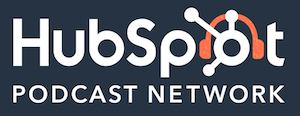
HubSpot Podcast Network is the audio destination for business professionals who seek the best education and inspiration on how to grow a business.
 Did you know there’s an automated marketing platform that’s 100% designed for your online business? It’s called Drip, and it’s got all the data insights, segmentation savvy, and email and SMS marketing tools you need to connect with customers on a human level, make boatloads of sales, and grow with gusto. Try Drip free for 14 days (no credit card required), and start turning emails into earnings and SMS sends into cha-chings.
Did you know there’s an automated marketing platform that’s 100% designed for your online business? It’s called Drip, and it’s got all the data insights, segmentation savvy, and email and SMS marketing tools you need to connect with customers on a human level, make boatloads of sales, and grow with gusto. Try Drip free for 14 days (no credit card required), and start turning emails into earnings and SMS sends into cha-chings.
Did you miss our previous article…
https://www.sydneysocialmediaservices.com/?p=1064

